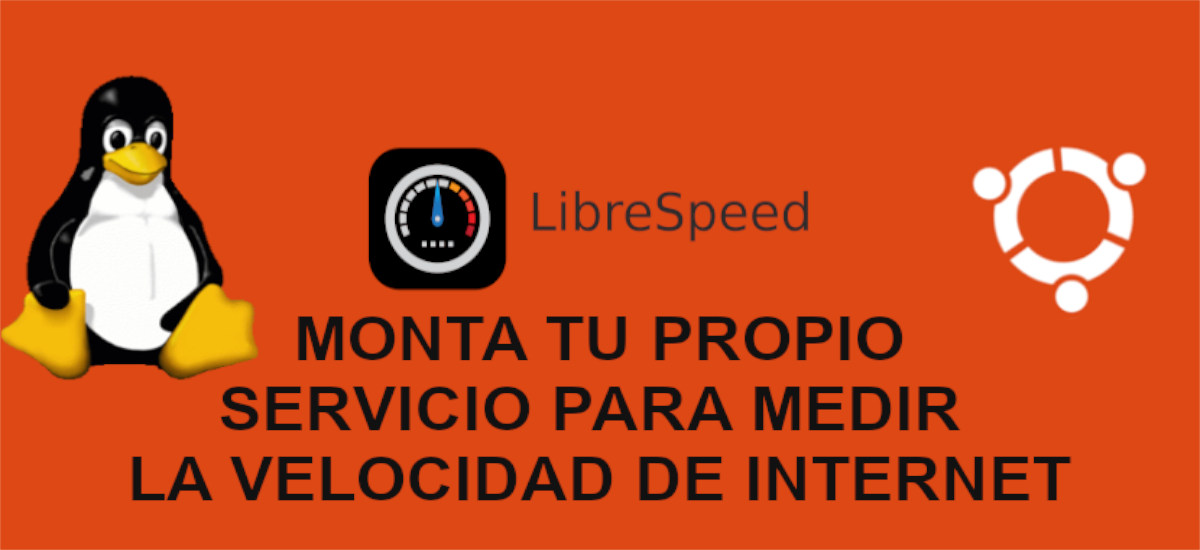
In the next article we are going to take a look at LibreSpeed. Next we will see how any user will be able to set up a speedtest mini server quickly and in a few easy steps. With him we will be able to get to have a free speed test and open source that can be hosted on a server, and that users will be able to run from their favorite web browser.
This speed meter is available for free and is compatible with the main web servers that are commonly used. Measure the ping, sending an HTTP request to the selected server and it measures the time until it gets the response. It will also allow us check upload and download speed. All in a very simple and fast way.
Broadly speaking, LibreSpeed is an application with which test the speed of the bandwidth of our Internet connection. It is used by hosting it on a server in order to serve users to perform the speed test (Speedtest).
General characteristics
- We can set download speed and upload speed through the test you perform.
- This test uses ping y jitter.
- Direction IP, ISP and distance detection.
- Telemetry (Optional).
- It is going to offer us the possibility to share results (Optional).
- Multiple test points (Optional).
- The test is compatible with any browser that supports XHR Level 2 and Web Workers. JavaScript must be enabled. Everybody modern browsers are supported are: IE11, the latest Edge, the latest Chrome, the latest Firefox, and the latest Safari.
- On the client side, the test can use up to 500MB of RAM on very fast connections.
- As well works with mobile versions.
These are just some of the features of this tool. You can consult all of them and some more in the GitHub page for this project.
Install LibreSpeed
First of all, first we will need to have PHP and Apache installed. These requirements can be installed as root or using sudo. To do this, you just have to open a terminal (Ctrl + Alt + T) and write the following commands in it:
sudo apt-get install apache2 php
Another option to install the two previous packages will be to use an application like Tasksel. After installing Apache and PHP with all the necessary modules, we will need restart Apache service. This can be done using the command:
service apache2 restart
Clone the repository
The default Apache root directory can be / var / www / o / var / www / html /. It is necessary to verify the route before continuing.
Before continuing we will need install git:
sudo apt install git
For the following lines we are going to assume that the apache path is / var / www /. Having this clear, we will be able to clone the repository from GitHub using the following commands:
cd /var/www sudo git clone https://github.com/adolfintel/speedtest
Finished the previous steps, now we will be able to select one of the fastest design examples, with which we will achieve a greater speed of the main page. More details about this can be found in the project documentation.
Start the SpeedTest service
For this example we are going to use the file example-singleServer-gauges.html. To use it, you just have to copy it as index.html. This can be done by executing the command in the terminal in which we execute the previous commands:
cd speedtest sudo cp example-singleServer-gauges.html index.html
After these commands, we only have reload apache with the command:
systemctl reload apache2
With all this done, we should already have access to our own speed test. To access speedtest, in your favorite browser you just have to go to the following URL:
http://localhost/speedtest/
Before running the internet connection speed test, it is important to close any application that may be running or anything else that may be consuming the bandwidth.
Setting up all of this is pretty straightforward, and can be done in a few minutes without too much fuss. To obtain more detailed information about the operation and the possibilities it offers to users, you can consult the Wiki that they make available to users in the page on GitHub of the project.



